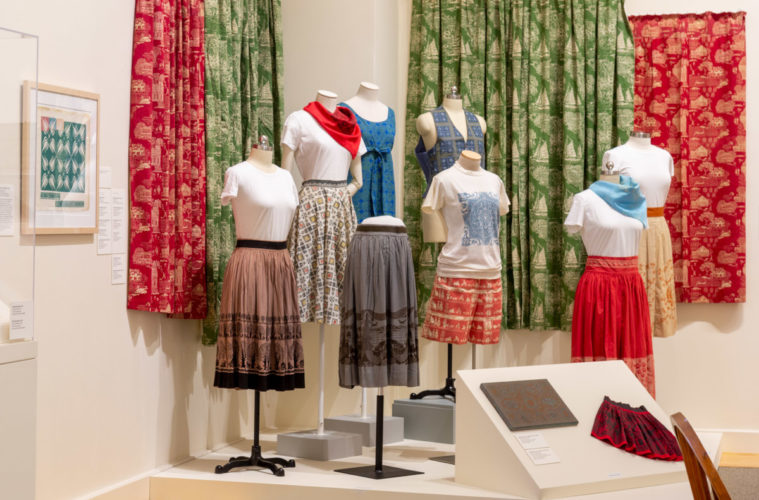It all started with a simple barter. In the late 1930s, a young Gloucester woman, Aino Clarke, asked her friend, illustrator Virginia Lee Burton Demetrios if they could trade services: Clarke would teach Demetrios’s sons to play the violin in exchange for art lessons for herself. Soon, more aspiring artists came calling.
In the years that followed, these impromptu art classes transformed into the Folly Cove Designers, a thriving and renowned craft guild that sold its bold and colorful printed fabrics through major retailers, was featured in contemporary museum exhibitions, and, some say, helped spark a national revival of arts and crafts design in the mid-20th century.
Now, the Cape Ann Museum has created its own exhibition, Designed & Hand-Blocked by the Folly Cove Designers, to share the remarkable history of these local designers and display enduringly beautiful examples of their work. The exhibition will be open until March 25, 2023.
“It’s a cornerstone of the stories we tell here at the museum,” says Leon Doucette, assistant curator at the Cape Ann Museum.” There are certain local stories that are so important to the overall narrative of the region.”
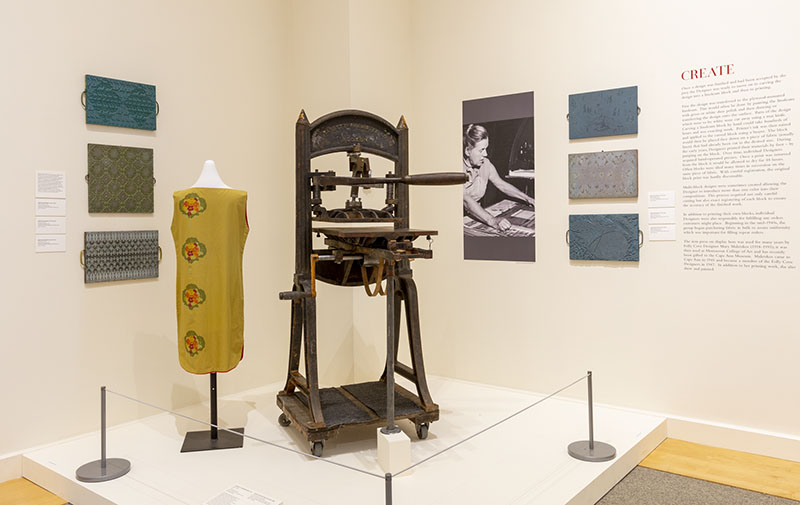
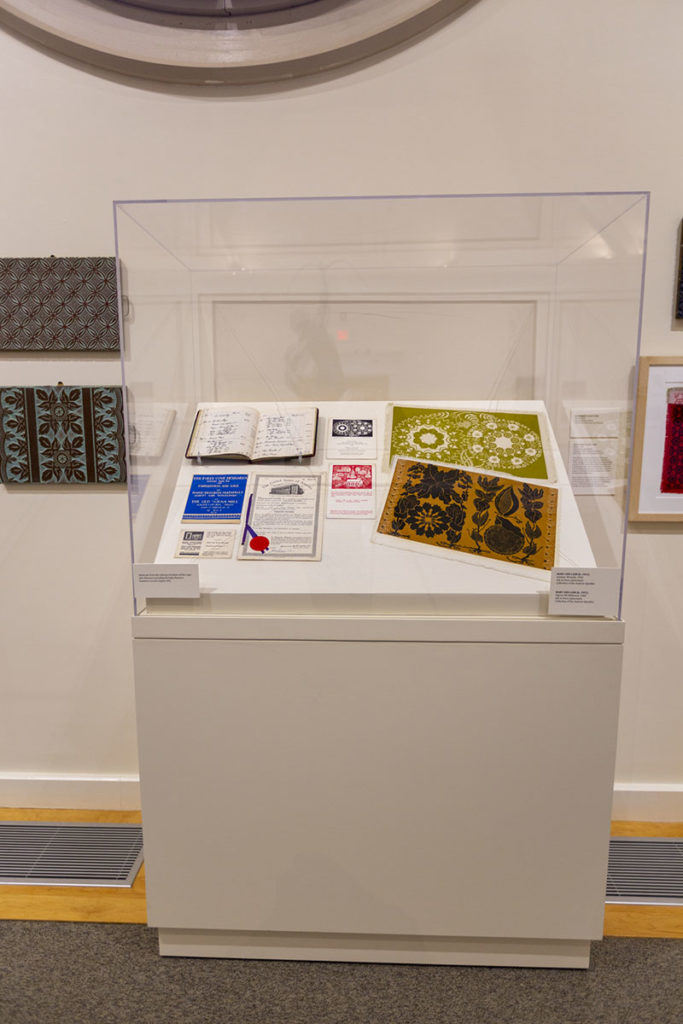
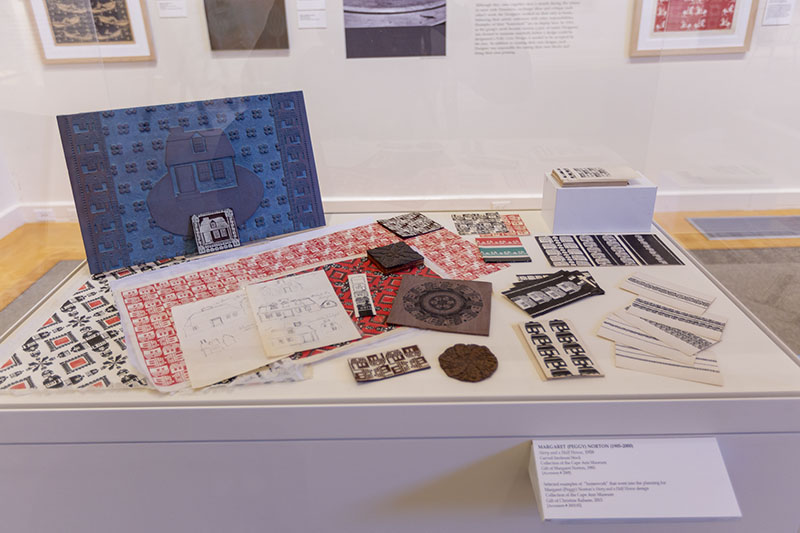
When the first art lessons began, Demetrios had studied art, worked as a newspaper illustrator, and published her first children’s book under the name Virginia Lee Burton— though she was yet to produce the books she is most famous for like Mike Mulligan and His Steam Shovel and The Little House. Teaching was new to her, but as she went she developed and honed her own philosophy, centered on the idea that, with practice and dedication, anyone could make art.
“She had this belief that everyone could create something that was not only beautiful but useful,” says museum director Oliver Barker.
The casual lessons soon became more formalized, as Demetrios created a rigorous set of exercises to help her students—almost all of whom were women—develop their skills. By 1941, she had trained so many artists to such a high quality of work that they decided to form a professional guild, and the Folly Cove Designers were born.
Folly Cove designs are characterized by motifs drawn from the beauty of everyday life. Birds, fruit, flowers, the ocean, and people at work and play recur frequently in their work. The central images of each design are then repeated and reflected to create a pattern. The group focused on block printing: They developed designs, carved them into linoleum blocks, and printed them, mostly on fabric.
Most of the members had other familial or professional responsibilities, so they worked on their own time, meeting up regularly only during the winter. The group found a fruitful balance between encouraging individual work and banding together around a shared aesthetic for a common cause.
As the group grew, their work began to catch the attention of major retailers, and they struck several deals to distribute their work through stores like Lord & Taylor, which once featured Folly Cove designs in a window display on Fifth Avenue in New York City.
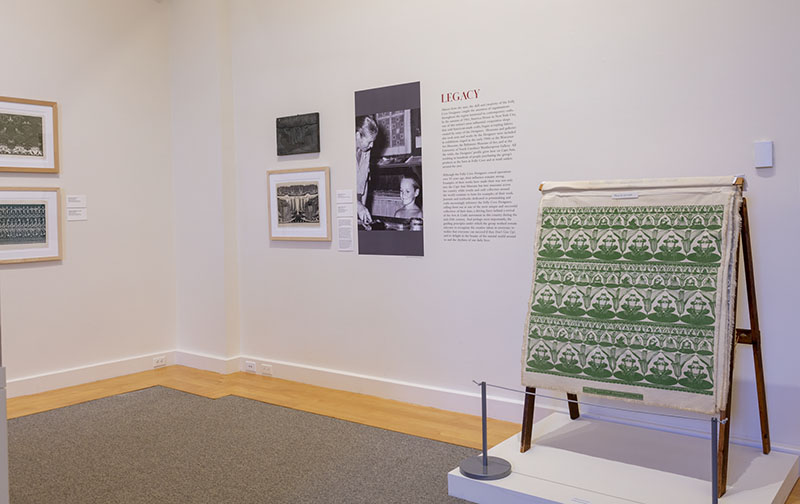
The new exhibition includes many examples of this work, often pairing printed fabrics with the carved blocks used to create them, some still stained with bright ink. A fully operational printing press used by the designers and donated to the museum by a professor from Montserrat College of Art is also on display. The museum has plans to use it in hands-on block printing lessons for the community after the exhibition ends.
In one corner, mannequins borrowed from the Peabody Essex Museum wear skirts, dresses, and other clothes made of fabric printed with Folly Cove designs, a display that Doucette says helps tell the story of the designers as artists who created beauty and function. “It creates a really striking corner, in terms of merging the story and the visual pop of those objects,” he says.
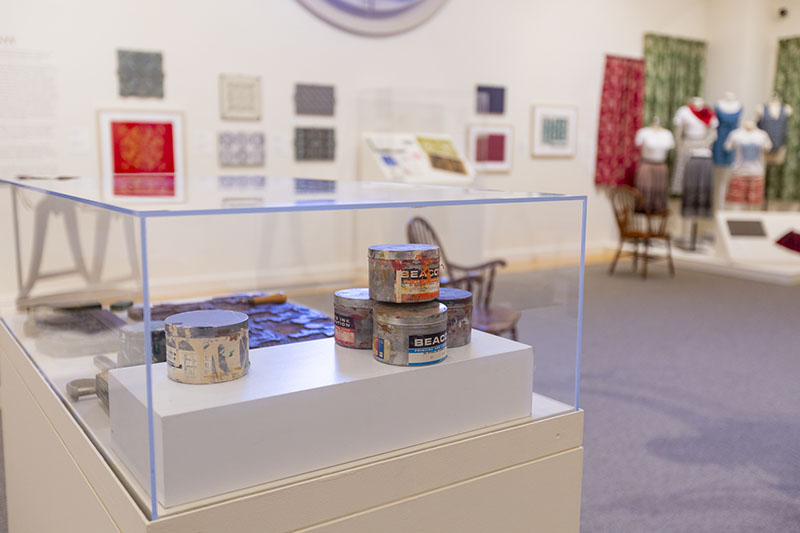
When Demetrios died in 1968, the Folly Cove Designers chose to complete one final season of work, then disband. When the guild dissolved in 1970, it donated a trove of prints, printing blocks, tools, and other items to the museum. When the museum underwent major renovations in 2014, it created a small gallery space dedicated to the group, featuring a rotating selection of printed textiles, a few printing blocks, archival materials, and computer terminals that allow visitors to digitally explore hundreds of designs created by the group.
Then, when Gloucester started planning events to commemorate the 400th anniversary of its settlement by Europeans, the museum realized it had the ideal moment to showcase even more of its rich collection and bring to light other Folly Cove Designers items borrowed from private and institutional collections.
“This was a really good opportunity to shine a focus on something that was distinctively Cape Ann,” Barker says. “They had found a model that really worked—to me that’s a really wonderful story.”

